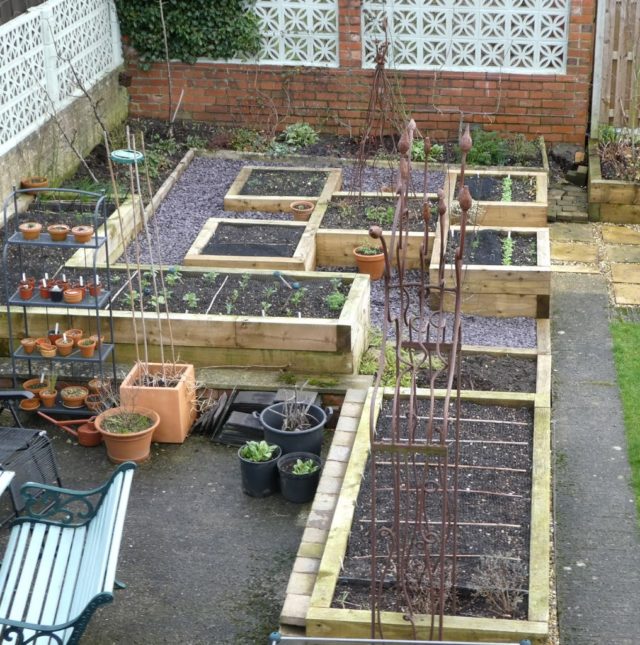Maximize Yield with Effective Crop Rotation Plans

Maximize Yield with Effective Crop Rotation Plans
Crop rotation stands as a cornerstone of successful gardening, particularly for those aiming to maximize yields. By strategically planning your crop rotations, you can bolster soil fertility, control plant diseases, and ultimately enhance the productivity of your garden. Let's explore the world of crop rotation for high-yield gardens, diving into its benefits, techniques, and best practices to help you achieve optimal results.
Understanding Crop Rotation
What Is Crop Rotation? Crop rotation involves the systematic planting of different crops in the same area over a sequence of seasons. This practice is aimed at preserving soil health, managing pests and diseases, and optimizing crop yields.
Benefits of Crop Rotation
Enhancing Soil Fertility One of the primary benefits of crop rotation is its ability to maintain soil fertility. Different crops have varied nutrient needs and contributions to the soil. For instance, legumes such as peas and beans fix nitrogen into the soil, enriching it for subsequent crops.
Managing Plant Diseases Crop rotation disrupts the life cycles of pests and pathogens, reducing the buildup of specific diseases in the soil. By alternating crops, you can effectively manage diseases that target particular plant species, thereby improving overall plant health.
Improving Garden Productivity By implementing a well-planned crop rotation system, gardeners can ensure a continuous supply of healthy crops throughout the growing season. This method minimizes the risk of depletion of soil nutrients and the onset of pest-related issues.
Techniques for Effective Crop Rotation
Crop Sequencing Successful crop sequencing involves planning which crops to grow in subsequent seasons based on their nutrient requirements and growth patterns. For example, pairing nitrogen-demanding crops with those that are nitrogen-fixing can optimize soil health and reduce dependency on external fertilizers.
Choosing the Right Crops Selecting crops that complement each other in terms of growth habits and nutrient needs is crucial. This ensures minimal competition for resources and maximizes the use of available space in your garden.
Garden Layout The layout of your garden plays a pivotal role in effective crop rotation. Strategically placing taller crops at the back and shorter ones at the front ensures adequate sunlight exposure and airflow, contributing to overall plant health and productivity.
Companion Planting Integrating companion planting into your crop rotation plan can further enhance garden productivity and resilience. For example, planting aromatic herbs like basil alongside tomatoes can deter pests naturally, reducing the need for chemical interventions.
Best Practices for Crop Rotation
Monitoring Soil Health Regularly assessing soil pH and nutrient levels is essential for maintaining optimal growing conditions. Adjusting fertilization practices based on soil test results ensures that crops receive the necessary nutrients for healthy growth and development.
Managing Pests and Diseases Integrated Pest Management (IPM) strategies, which combine physical, biological, and cultural controls, offer sustainable solutions to pest and disease management. This approach minimizes the reliance on chemical pesticides, promoting a balanced ecosystem within the garden.
Conclusion
In conclusion, effective crop rotation is a cornerstone of sustainable gardening practices, offering numerous benefits such as enhanced soil fertility, disease management, and improved crop yields. By carefully planning crop sequences, choosing compatible crops, and integrating companion planting, gardeners can create resilient and productive gardens year after year.
For more insights into crop rotation myths and facts, visit Crop Rotation Myths and Facts.
FAQs
Q: How do I choose the right crops for my crop rotation plan? A: Select crops based on their nutrient requirements and growth habits to minimize competition and maximize garden productivity.
Q: How often should I rotate my crops? A: Crop rotation frequency depends on crop types and garden conditions, typically every 2-3 years to optimize soil health.
Q: Can crop rotation manage plant diseases effectively? A: Yes, by disrupting disease cycles, crop rotation reduces the prevalence of soil-borne diseases. Integrated approaches like IPM are also beneficial.
Q: How should I design my garden layout for crop rotation? A: Arrange crops considering their heights and nutrient needs. Place taller plants behind shorter ones to optimize sunlight and space.
Q: Is companion planting beneficial in crop rotation plans? A: Yes, companion planting enhances garden health by utilizing plants that mutually benefit each other, such as repelling pests or enhancing nutrient uptake.
0 Response to " Maximize Yield with Effective Crop Rotation Plans"
Post a Comment